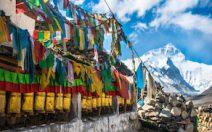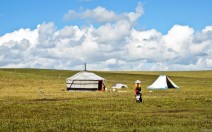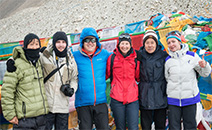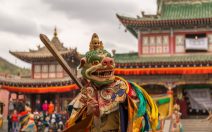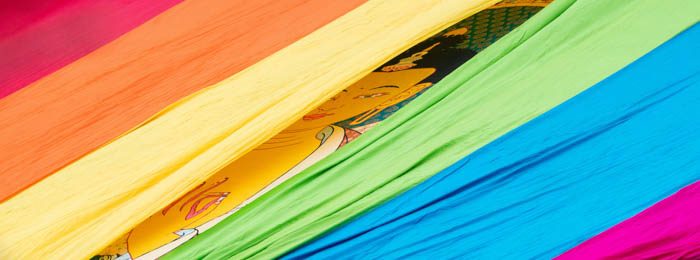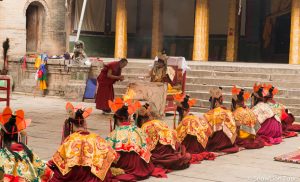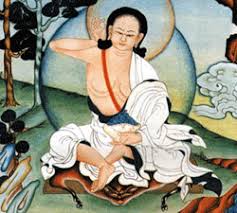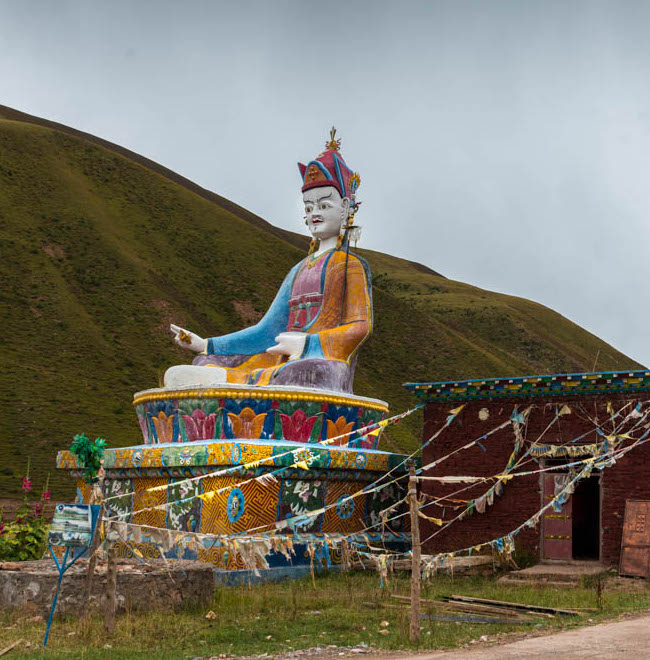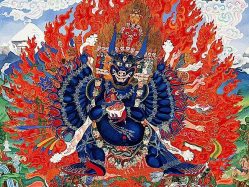General info about Tibetan Buddhism
The historically the Buddha was born as an ordinary person like ourselves. He was brought up as a prince, married and had a son. Then, after observing the suffering of human beings, aging, sickness, and death, he totally renounced the worldly way of life. He underwent severe physical penances and with great effort undertook long meditation, eventually becoming completely enlightened.
Tibet was the last major culture in Asia to receive the Dharma directly from India. Due to its own phase of cultural development at the time, Tibet itself was unusually receptive to Indian influence. When Buddhism crossed from India into Tibet in the 7th century CE, all the major streams of Buddhist thought and practice in India were flowing openly. Tibet thus became heir to the full range of Indian Buddhist traditions, and made Mūlasarvāstivāda monasticism the basis for their conduct, Mahāyāna the basis for their view, and tantra the basis for meditative practice. As Tibetans assimilated this vast array of transformative wisdom, virtually every aspect of their culture would be indelibly marked by Indian Buddhism—from medicine to art to politics to literature. More …
_____________________________________________________________________________
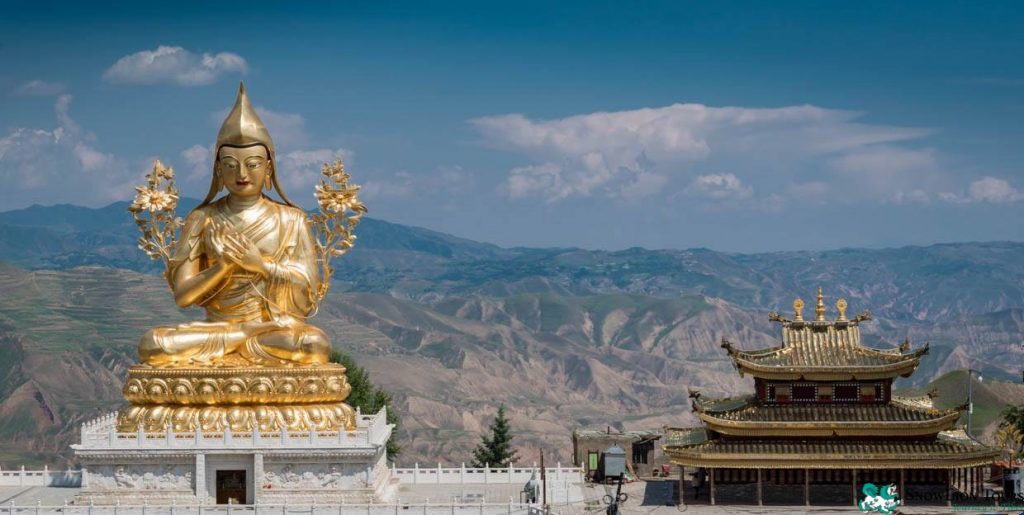
Tsongkhapa Statue in Shachung Monastery
Tsongkhapa was born in 1357 in Tsongkha, a valley in the Amdo region of Qinghai. Initially he received the name Kunga Nyingpo from the Fourth Karmapa Rolpai Dorje (1340-1383), with whom he made his novice vows. Upon his ordination he received the name Lobsang Drakpa from a Kadampa lama, Choje Dondrub Rinchen. At age sixteen, after completing his studies with Choje Dondrub Rinchen, Tsongkhapa left Amdo for the U-Tsang region of Central Tibet. More info…
_____________________________________________________________________________
The Story of Tibet’s Greatest Yogi Milarepa
Throughout the history of Buddhism there have been many practitioners for whom the communal life of a monk has come to seen as an obstacle to their spiritual goals. Leaving the security of the monastery behind, they have often ventured into the wilderness, taking up an abode in remote locations where they can remain in self-imposed isolation. In doing so, these practitioners aim to sever the ties that bind them to the realm of samsara and achieve the final insight which leads to liberation from all suffering. Such spiritual adepts are called yogis.
In contrast to the uniform appearance of monks, the yogi is not bound by the common requirements of monastic discipline. Some grow their hair long. Others may even discard the maroon coloured robes of a monk. Read More …
_____________________________________________________________________________
When the Tibetan king Trisong Detsen (r.755-794 CE) sought to establish the first Buddhist monastery in Tibet at Samye he was confronted by a problem. Whatever construction took place during the day was undone at night by the local spirits and gods who resided in the surrounding landscape. Advising the king in the construction of this monastery was an Indian Buddhist monk, Śāntarakṣita.
Although Śāntarakṣitawas learned in the study of the scriptures he was not a master of the tantric rituals required to subdue hostile spirits. He therefore suggested to the king that he invite a master known as Padmasambhava (Lotus Born Guru) who was then residing in a cave in Nepal. Padmasambhava accepted the invitation and upon arriving at Samye he performed the necessary rituals to subjugate the local spirits. More info
_____________________________________________________________________________
Wrathful Deities & Meditational Deities
For those who are unfamiliar with Tibetan Buddhism their first encounter with local gods, wrathful protectors and tantric meditational deities can be a confusing experience. Encountered within darkened chapels which are often heady with the scent of alcohol, the protectors can seem to represent all that is antithetical to the Western perception of Buddhism. Their terrifying visages are often composed of bulging eyes, fanged mouths frozen in an ever present snarl and protruding tongues. Clad in garments wrought from flayed human skin and bones, and adorned with garlands of skulls or decapitated heads, they clutch at swords wreathed in flames. More info…
_____________________________________________________________________________
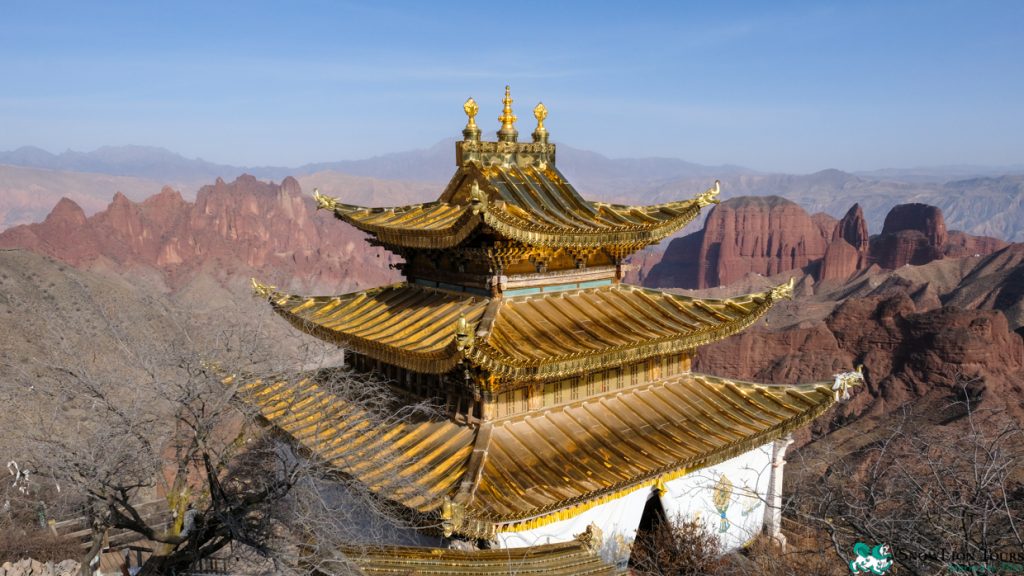
Namdzong Nunnery.
From imposing fortress like structures to simple meditative cells, no other building has dominated the traditional Tibetan landscape like that of the Buddhist monastery. Due to the unique character of Tibetan Buddhism and the physical nature of the Tibetan landscape, Tibetan Buddhist monasteries differ in terms of architecture and spatial arrangement from monasteries found in other Buddhist cultures. More info…
